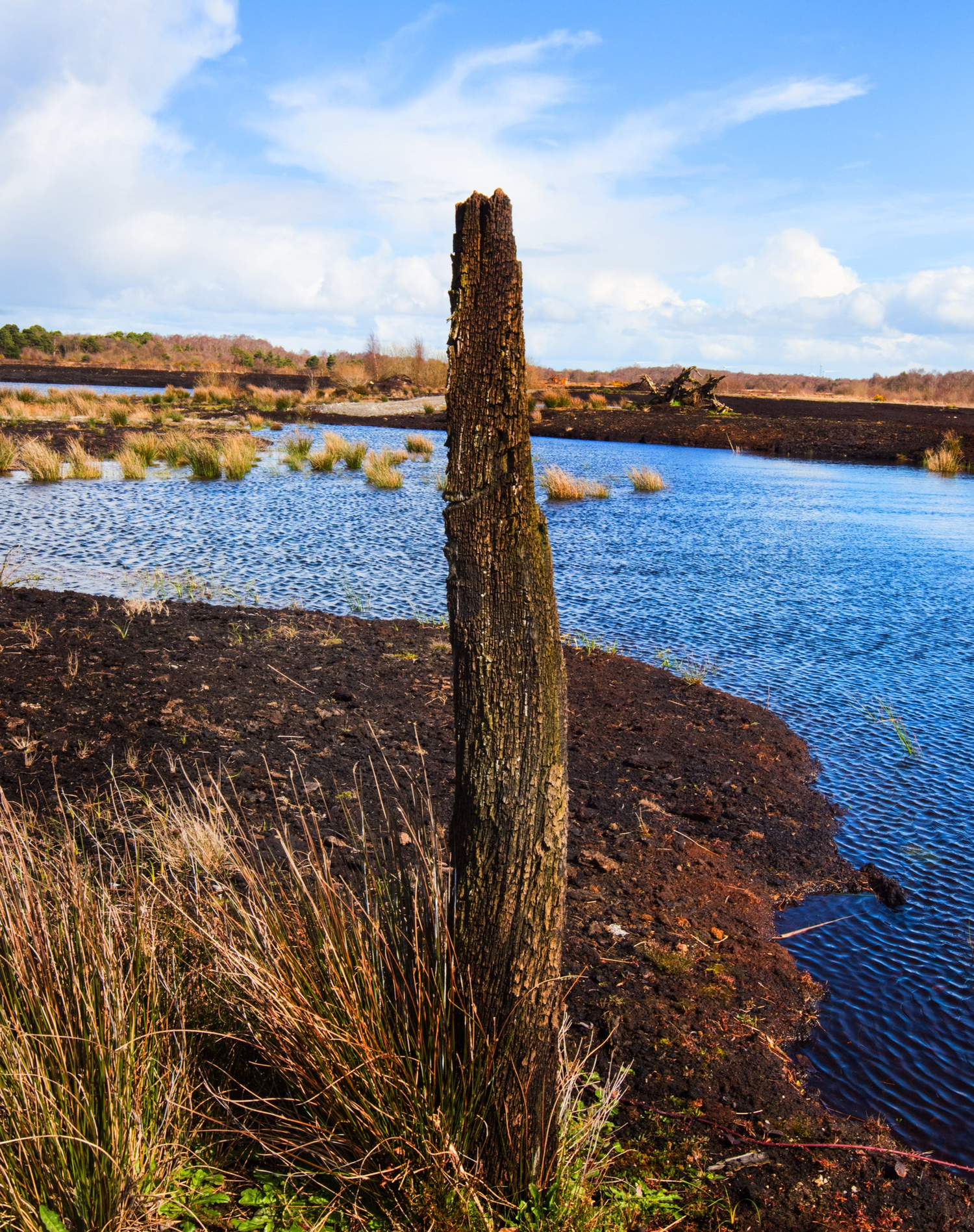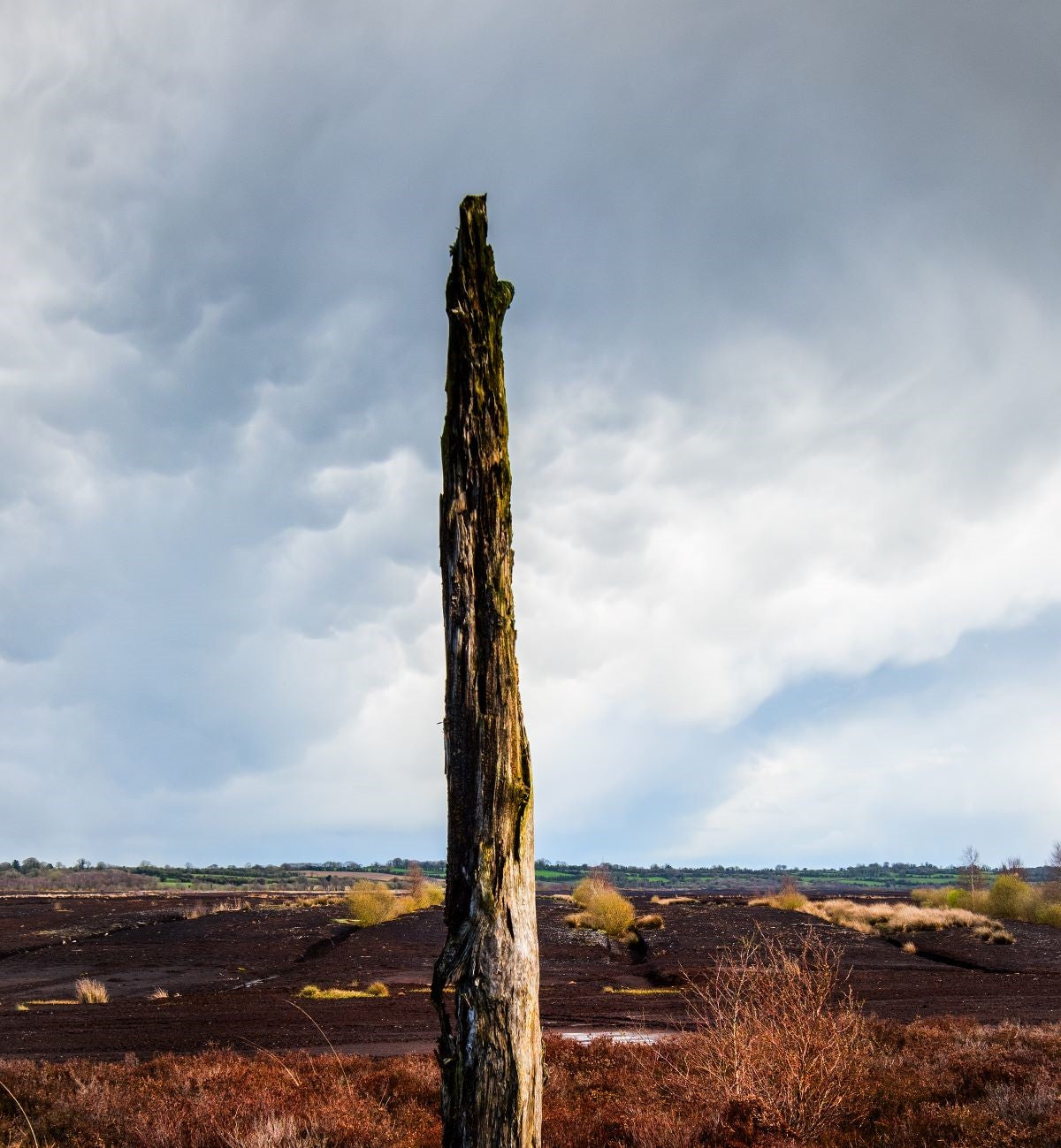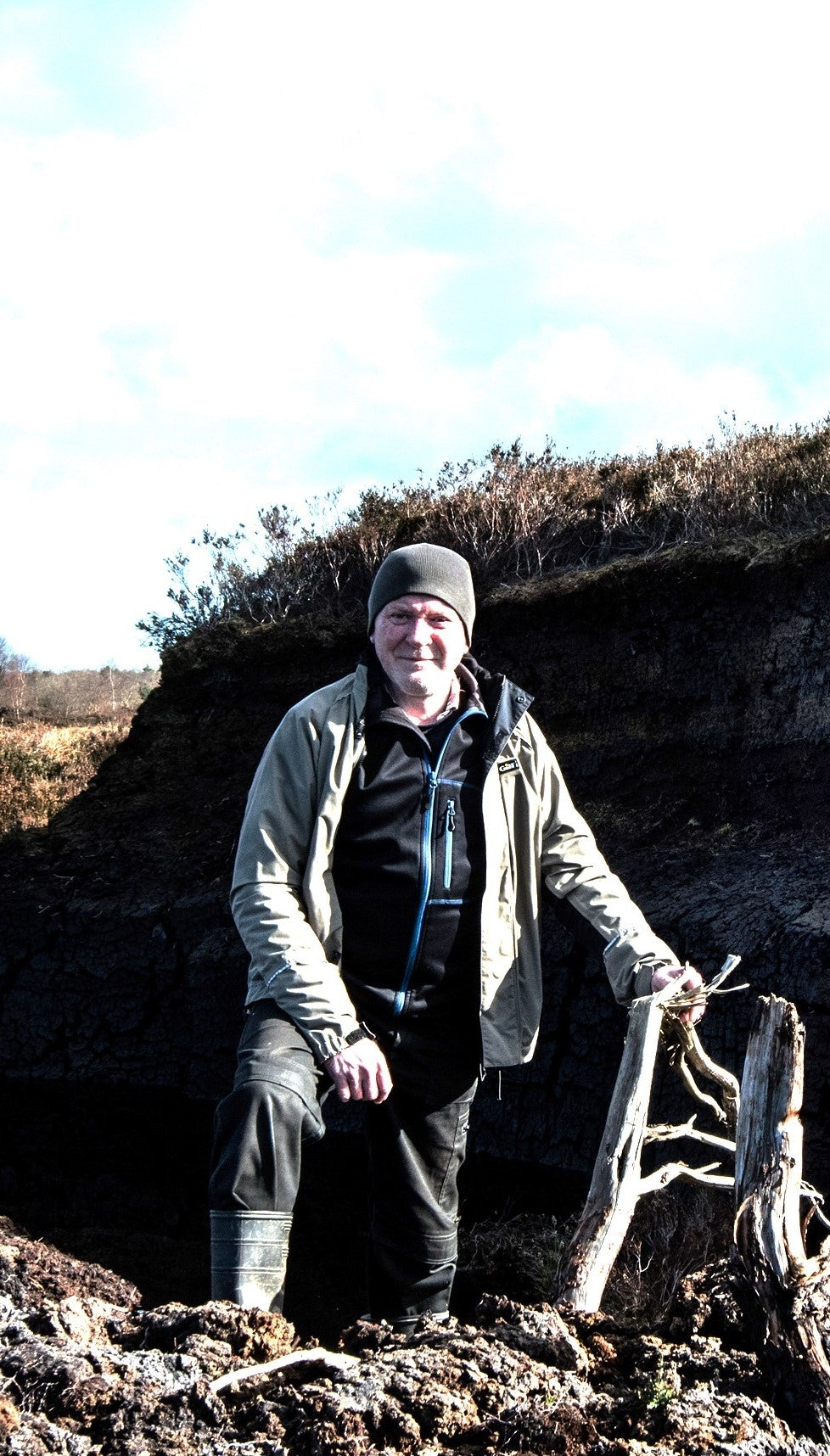Each piece has it's own story
Pieces reveal themselves from the different bog woods as I work with them. Every piece of bog wood has it's own story to tell, just waiting to be extracted.

Origins of Bog Woods
I have always found the bogs of Ireland to be wild, adventurous and mysterious places. Vast impenetrable oceans of breathing and lurking dark water, moss, heather, peat and menacing but legendary bottomless bog holes. Fearsome places on dark wet wintery days but magnificent and inviting when in full bloom on a long hot summer’s day.
From childhood and going to the bog every summer to save turf I have always been intrigued and in awe of the magnificent and dignified bog woods when released from the peat having been entombed and preserved by nature for thousands of years in the oxygen starved boglands.
"Thousands of years old", my father and uncle would repeat every year when these woods were revealed, just as amazed as I was. These mysterious oak, pine or yew trees, sometimes twisted and gnarled or long straight and proud are tangible windows into our history from the Stone Age to the Celts. As living organisms they shared the world with our ancient ancestors who wandered, climbed, sat, sheltered, lived and died under them. I am constantly minded of this connection whenever I see or work with bog wood. Every piece of bog wood appears to have its own unique story.

The Source
There are two types of bogs in Ireland – Raised bogs and Blanket bogs.
Raised bogs cover vast tracts of land particularly in the low lying Midlands of Ireland. As Ireland’s last ice age came to an end around 10,000 years ago bogs began to form in the glacial lakes left behind by the retreating ice. These de-oxygenated lakes eventually filled with semi decomposed plant matter to become peat. With its acidic and wet soil providing the ideal conditions for a new plant to take over called Sphagnum moss and so begins the formation of Raised bogs. Oak and yew trees grew around the edges of the bog and were drowned as the bogs expanded out of their basins. The lack of oxygen in the waterlogged peat prevented the natural process of decay and ensured the trees stumps were preserved in the accumulating peat.
As the millennia progressed, and agriculture, domestic and industrial turf cutting expanded into the bogs, these ancient bogwoods were exhumed in all their original glory.
Blanket bogs, which are the second type of bog found in Ireland, started to form around 5,000 years ago triggered by a change in the climate and in some cases by the impact of deforestation by the early settlers to the land. Blanket bogs occur predominantly on the western seaboard in areas of poor drainage and on high but relatively flat mountainous areas throughout the country.

My Journey
My name is Brian Fennell and I am from County Laois in the Irish Midlands. The predominantly flatlands of the Irish Midlands are home to the majority of Irelands raised bogs formed by the retreating and melting glaciers at the end of the Ice Age 10,000 years ago. County Laois is also home to the other bog phenomena, blanket bogs, on the upper elevations of the Sliabh Bloom Mountains. Like most youngsters, going to the bog in the summer months to save and bring home the turf for winter fuel was an annual pilgrimage of penance, midges and endless back breaking work. I would wander to the edge of the vertical turf bank face from where the peat was dug, minded of the constant warnings of the foreboding bog holes filled with dark murky water at the base of the turf banks. I would scan these pools or the turf bank for released ancient woods entombed and preserved by the bog for thousands of years. I was and still am in awe of these mysterious trees and this preservation phenomena and my mind fills with images of our ancient peoples and animals wandering, living and dying beneath them.
As a young man I started to bring pieces of bog wood home and I recall the first piece I made was a mug stand for my aunt but it was more about sharing the wonder of the age of the timber with her and the household than it being a mugstand. I became a bog wood scavenger and every piece of wood has a story that I wanted some day to create, preserve and share.
I am mostly self-taught in relation to sculpting. Learning about the tools, chisels, rasping, sanding, sealing, waxing and polishing was gained from years of trials and error peppered somewhere in the midst of my 35 years day job in the construction industry. To broaden and improve my skill base and knowledge in relation to sculpting and finishing pieces I attended a week long workshop with a renowned Kerry based sculptor. The knowledge and skills I learned in that relatively short period are lifelong and invaluable.

The Process
Once exhumed from the preservation of the bog and exposed to the external atmospheric elements of sun, rain, heat, frost, bacteria and insects, bog woods will decay.
I bring the pieces back to the workshop and store in a dry environment and let all the moisture evaporate and protect the wood from the damp and the elements. The woods need time to dry out and season and let the natural grains and cracks expand and contract as it dries.
Once seasoned I let the piece of wood tell its own story and I sculpt and create based on that narrative. As much as possible I try to leave the original grain on a finished piece and not completely smooth polish and sand the entire area. This allows people to touch and experience the rough and coarse texture of the wood as I found it in the bog and hence the cornerstone of our brand name Bog Rough Creations.
Each piece unique
No two creations are the same, each has it's own story and journey to where it is now.




